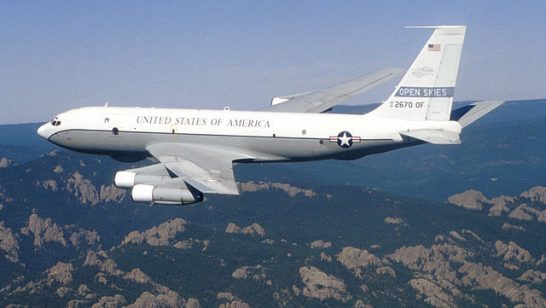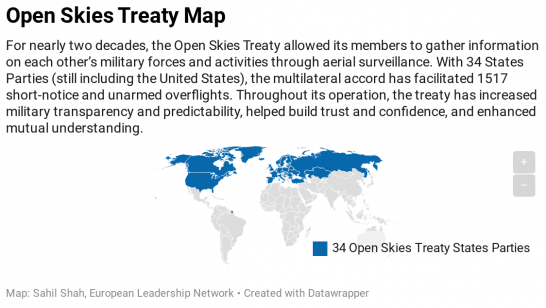
For nearly two decades, the Open Skies Treaty has allowed its members to conduct observation flights over each other’s air space, designed to increase transparency, build trust, and enhance mutual understanding between Russia and the West. The US withdrawal from the Open Skies Treaty caused tension with European allies earlier this summer. In turn, the upcoming Treaty Review Conference in October comes at a critical juncture, directly preceding when the US withdrawal will take effect.
As the remaining member states prepare to try to resolve technical challenges and compliance concerns undermining the Treaty’s chances for survival, this new ELN policy brief by Dr Alexander Graef assesses the situation and proposes six key recommendations:
- Reach out to Open Skies Treaty members with either a low number of active flights, no certified aircraft and/or a special bilateral security relationship with the United States to convince them to remain in the Treaty.
- Express publicly the political will to keep the Treaty in operation, confirm that sensor data from Open Skies Treaty overflights will not be shared with non-members and elaborate on how technical measures can prevent such proliferation;
- Actively engage Russia and Belarus in further negotiations about the 500 km sub-limit over the Kaliningrad region. Consider shifting the debate towards a broader discussion about special regulations for territories separated from the mainland, including but not limited to the specification of the phrase “special procedures” as provided in Annex E subparagraph 5 (B) (2) to the Treaty;
- Address the Russian denial of overflights within its 10 km border zone to Georgia established in May 2010, and involve Georgia in talks about its denial of Russian overflights over its territory. Re-visit possible solutions with third-party mediation that would not impinge on the international status of Abkhazia and South Ossetia (status neutrality);
- Search for possible financial and organizational solutions to safeguard the work of the OSCC, including reasonable budget contributions reflecting present economic realities and, if possible, additional, voluntary contributions in accordance with Annex III to decision number 6 of the OSCC;
- Evaluate the technical and political feasibility of re-establishing the Pod-group to enhance aircraft capacity beyond 2020 and consider offering to use the so-called taxi option, which is the provision of aircraft by the observed party in order to facilitate flights, particularly long-range flights over Siberia.
Download the policy brief here
The opinions articulated above represent the views of the author, and do not necessarily reflect the position of the European Leadership Network (ELN) or any of the ELN’s members. The ELN’s aim is to encourage debates that will help develop Europe’s capacity to address pressing foreign, defence, and security challenges.
Image: U.S. OC-135B Open Skies aircraft – RAF Mildenhall Feb 2010; Wikimedia Commons


